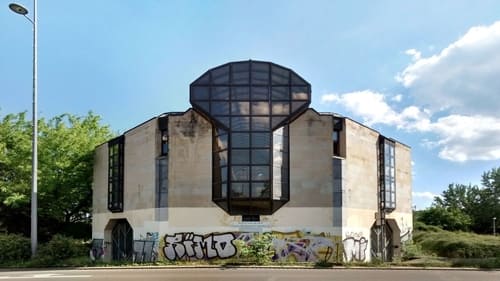
Director
The now-demolished council estate Robin Hood Gardens often occupies opposing positions within the architectural imagination. Was Alison and Peter Smithson’s 1972 brutalist contribution to the London cityscape a misunderstood masterpiece or a well-intentioned failure? Fifty years on, filmmakers Thomas Beyer and Adrian Dorschner capture the building in all its glory right before the wrecking ball brings an end to the Smithson’s magnum opus. While the controversial East London council estate is honoured at the Venice Biennale, the film revisits the building's critics, champions and the inhabitants themselves, to determine the true legacy of this concrete utopia. Robin Hood Gardens is dead. Long live Robin Hood Gardens.

Director
The “Bowlingtreff” is a bowling alley situated right in the centre of Leipzig opened in July 1987. At that time the quality of life in Leipzig and the whole GDR got worse. Houses collapsed because of poor conditions, public life and amusement was on a very low level. The “Bowlingtreff” was not merely an urban entertainment centre but a revolution in those days. Built with the help of hundreds of volunteers without permission of the state authorities in Berlin the building expresses a free and international architecture known as postmodernism. It is an architecture that was never seen before in Leipzig. Marble and parquet on the floor, a glass roof and beautiful pink pillars. The atmosphere was western as time witnesses remember it.

Cinematography
The “Bowlingtreff” is a bowling alley situated right in the centre of Leipzig opened in July 1987. At that time the quality of life in Leipzig and the whole GDR got worse. Houses collapsed because of poor conditions, public life and amusement was on a very low level. The “Bowlingtreff” was not merely an urban entertainment centre but a revolution in those days. Built with the help of hundreds of volunteers without permission of the state authorities in Berlin the building expresses a free and international architecture known as postmodernism. It is an architecture that was never seen before in Leipzig. Marble and parquet on the floor, a glass roof and beautiful pink pillars. The atmosphere was western as time witnesses remember it.


